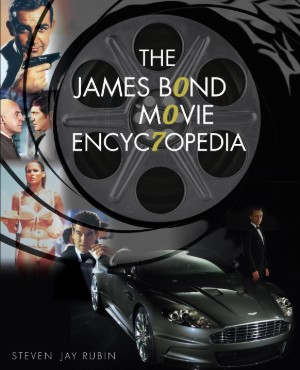One of the major reasons why actor Sean Connery decided to leave the James Bond series after You Only Live Twice was his experience in Japan during that movie’s location filming in July and August 1966. For an actor who was rapidly tiring of the James Bond films’ long and difficult shooting schedules, the Japanese location was the proverbial last straw.
His frustration began on July 27, 1966, when Connery and his first wife, actress Diane Cilento, arrived in Tokyo and were mobbed by 007 fans. Already hugely popular in Japan, James Bond enthusiasm had increased exponentially when it was announced that the latest film would be shot practically in the Japanese fans’ own backyard.
Hundreds of journalists and photographers—virtually anyone who could carry a camera—were sent to record the six-week-long Bond invasion. The torrent of coverage began at 5:00 pm on July 27, at the Tokyo Hilton, where a hasty press conference was arranged to greet the exhausted Connery. Agent 007 appeared rumpled and bleary-eyed, minus his toupee and dressed in baggy knockabout trousers, shower sandals, and a blue shirt open at the neck to reveal his hairy chest. “Is this the way James Bond dressed?” asked one reporter, who had waited in the hotel lobby for six hours. “I’m not James Bond,” Connery replied politely. “I’m Sean Connery and I like to dress comfortably, except for formal occasions.”[1]
Sensing that an international incident was brewing unless he appeared more cordial, Connery summoned his patented Bond charm and even managed a few weak jokes about his fondness for Scotch cooking and whisky. He let the reporters inspect the tattoos on his arms—one reading Scotland Forever and the other Mother and Father—and offered some words of praise for Japanese cooking. Connery also confessed that he enjoyed the ofuro, the Japanese bath. “It’s wonderful,” he beamed, “all that splashing around after you’ve washed yourself clean, and then getting back into a deep tub of hot water. The soaking is marvelous.”
After about twenty minutes of good-natured discussion, everyone was smiling, even publicist Tom Carlile, who had been nervous about the awesome crowd of camera-clicking reporters. And then the bombshell was dropped.
A reporter asked, “What do you think of Japanese women?” Connery thought for a second, according to a reporter from Asian Adventure who attended the press conference, and then smiled, answering the question honestly—if not diplomatically. “Japanese women are just not sexy,” he said. “This is even more so when they hide their figures by wearing those roomy kimonos.”
After Connery’s comment, the Asian Adventure reporter related, “There was a rather strained silence in the room. . . . National pride was aroused.” To avoid a confrontation, Carlile, the quick-witted PR pro, stepped in, asking the crowd’s indulgence so that Connery could get some rest after the long jet flight from London. Connery offered to pose once more for the cameras, then retired to his room.
The press conference was a bad omen, and it only led to more press scrutiny on You Only Live Twice. During the six weeks of filming in Japan, reporters were everywhere—hiding behind fences, hanging from trees, lurking in restrooms—all armed with cameras and ready to capture their own private scoop. Such coverage made the film front-page news for weeks, and at times put the Eon Productions crew under a microscope.
When a stuntman mistimed his throw and catapulted a steel dart into the wall of historic Himeji Castle, it seemed that every paper in Japan got wind of it. Official protests were lodged, the Eon crew was banned from the castle grounds—where the ninja training was being shot—and it was only after a judicious amount of apologizing and repeated offers to pay for any damages that the crew was once more permitted inside the grounds of the historic fortress.
Filming on the streets of Tokyo was at times impossible. No sooner would director Lewis Gilbert’s hidden camera begin recording Connery’s progress than the actor would be mobbed by fans. After location filming was completed in Japan, Connery returned to London to finish the picture. However, the seeds of discontent were already sown. After 1967, producers Albert R. Broccoli and Harry Saltzman would be looking for a new actor to play Bond.
[1] Andy Adams, “Bond Kicks Up a Furore in Japan,” Asian Adventure, August 1967.

